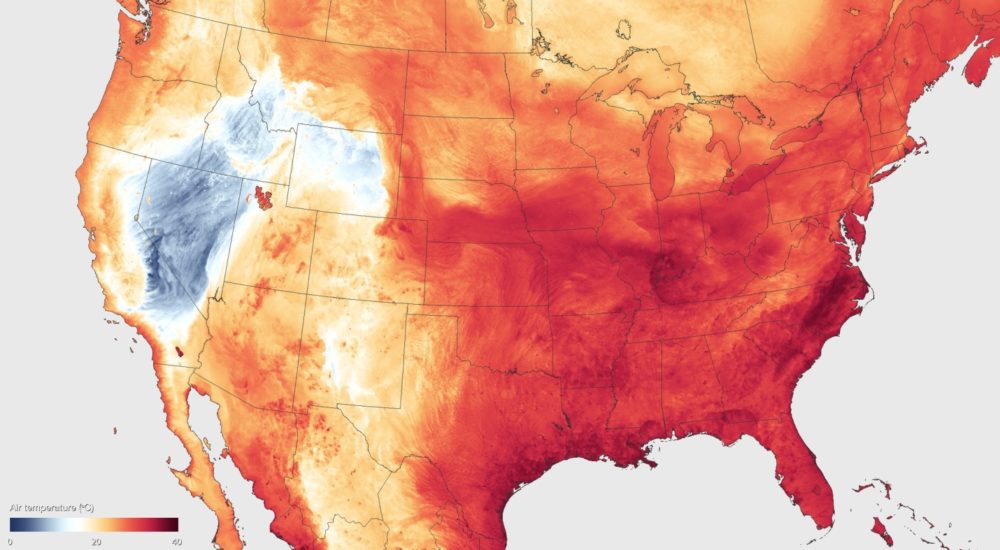Yesterday the White House announced a series of actions to help advance clean energy access for all Americans. Meanwhile, the National Weather Service warned of a major heat wave across much of the country this week and NOAA released data showing that June set another global temperature record. All of which is a good reminder that there’s lots we can and must do to address climate change, and we’ve got to keep equity at the heart of our solutions.
Clean energy savings for all
The Obama Administration’s Clean Energy Savings for All Americans initiative is a crucial step forward in helping to ensure that the benefits of the clean energy transition accrue to all. The initiative—to be executed in partnership with several federal and state agencies, utilities, and private companies—sets some exciting goals, including:
- Bringing 1 gigawatt of solar energy to low- and moderate- income families by 2020.
- Providing millions of dollars in funding and technical assistance to expand energy efficiency and solar power in low- and moderate-income communities.
- Implementing worker training programs that aim to train 75,000 workers to enter the solar industry by 2020, with an emphasis on reaching low-income and minority communities.
- Expanding the availability of financial and technical assistance tools for communities to access energy efficiency and solar power opportunities, including through Property-Assessed Clean Energy (PACE) financing and the Low Income Housing Energy Assistance Program (LIHEAP).
Significantly, the Federal Housing Authority (FHA) released guidance that outlines ‘how properties with PACE assessments can be purchased and refinanced with an FHA-insured mortgage.’ DOE also released an updated draft of the Best Practices Guidelines for Residential PACE Financing for public comment, and the Department of Veterans Affairs (VA) issued policy guidance for how veterans can take advantage of PACE programs together with the VA Home Loan Guaranty benefit.
The big takeaways: Ramping up energy efficiency and solar power can help households save money, even as we cut carbon emissions and reap public health benefits. Expanding clean energy access for low and moderate income families is the fair thing to do and it makes smart economic sense.
What’s more, done right, the clean energy transition can bring jobs and other economic opportunities to historically disadvantaged communities. There’s more work do, including scaling up resources for these types of efforts (which will require Congressional action) but this is a very important start!
Clean energy to advance climate resilience
Here’s the other thing: investing in clean energy can also be a way to build resilience to climate impacts. People in homes that are better built and better weatherized, that use less energy, and draw power from distributed energy resources like rooftop or community solar are also better protected from the impacts of extreme weather. The Clean Energy Savings for All initiative recognizes the opportunity to piggyback clean energy and climate resilience investments in homes and buildings in a way that makes them more effective and affordable.
And amplifying that type of synergy is going to be increasingly important as we work to both cut emissions and adapt to climate change.
Heat waves, climate justice, and clean energy
This week’s heat wave warning from the National Weather Service encompasses much of the nation, as the map below from NOAA shows. Many millions of people will be affected across the central and eastern US. If you’re in the affected area, do check out the CDC’s website on extreme heat and your health which provides advice on how to stay safe and healthy.
Extreme heat is especially dangerous for children, elderly people, those who suffer from ill health, and those who work outdoors—and it has a disproportionate impact on low-income households and communities of color.
Those who lack access to air conditioning, can’t afford high electricity bills, or live in aging, poorly maintained buildings, face extreme hardship when temperatures rise. Low-income communities and communities of color may also have a higher incidence of underlying health conditions, such as heart and lung diseases and diabetes, which can be further exacerbated by the impacts of heat.
We can and should do better to protect those who are most vulnerable. That includes investing in programs to expand clean energy access and energy efficiency such as those announced by the White House yesterday; providing bill assistance to low income households; expanding public health resources and cooling centers; and upgrading the nation’s aging public housing stock.
Rising global temperatures presage worsening heat waves
Our planet is heating up, as NOAA’s sobering statistics for June 2016 show. In a relentless trend, June marked the 14th consecutive month of record global temperatures. Global temperatures both on land and the sea surface broke records for this time of year. June 2016 was 1.62 degrees Fahrenheit above the 20th century average. The year to date (January–June) average global temperature was also the highest ever for this period, at 1.89ºF above the 20th century average.
And that means that heat waves will likely become more frequent and more severe in many places. So we’ve got to invest in commonsense measures to limit harms to those most vulnerable to climate impacts, even as we take steps to sharply curtail global warming emissions to limit future temperature increases.
As we look to a new administration and Congress, the scientific evidence on climate change and the need for strong, equitable solutions is clear. There’s no excuse for anything less than a robust response from our political leaders, given what’s at stake for all of us.

